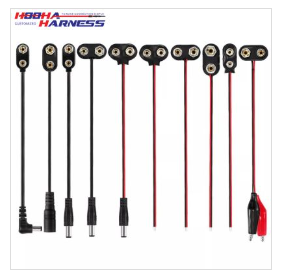When it comes to selecting the right lightbar harness, there are several key factors that need to be accounted for in order to ensure peak performance and safety. Step 1. Determine The Power Needs of Your Lightbar The lightbars use between 30 to 300 watts, so the harness must be rated for this range. This can cause overheating or electrical faults from bad harnesses. So if your lightbar consumes 150 watts, any harness rated for a maximum load of only 100 watts wouldn't cut it - and could be unsafe.
Next, examine the belt depth. Most vehicles are suited to a harness that falls between 10 and 15 feet. However, with larger trucks or more specialized installs longer harnesses are needed. If the harness is too short, this will stretch out and put undue strain on the wires that may result in breaks or electrical problems.
The wire gauge is another important thing{id} Most lightbar wiring harnesses include 14-gauge wires, which are flexible enough to work for nearly any location but stout enough that they can reliably deliver the power needed. That said, if you have a higher power requirement (let us say 200 watts or more) it is recommended that you use a twelve-gauge wire which can prevent voltage drops and provide the right supply of energy.
Make sure the harness contains a relay and fuse. The switch is protected from high currents by a 40 amp relay (commonly used on light bars). The most common fuse will be some sot of 30-amp - it protects the whole circuit from short-circuiting. Both are important for protection and durability.

Outdoor connectors need to be leak-free and stout. Harnesses featuring IP67 rated connectors are used to ensure dust and water ingress protection both on road (2nd image) as well off-road or harsh weather conditions (1st picture). Good connectors provide good connection quality that will help both with moisture intrusion and dirt issues.
RFI may be fitted with a switch and harness. While some harnesses ship with the usual toggle switch, others come complete with more sophisticated type of controls -- such as an illuminated rocker switches. Illuminated switch for use at night (we all know how important that is!). Simple, visible and easy to operate. Make sure it is easy to install and the switch works well.
Finally, there are economic factors. In the market, you will pay between $15 up to $50 for lightbars wiring harnesses with varied features and qualities. Buying from a quality brand can repay over time as it put you at less risk of experiencing electrical problems and replacing parts. Nilight and MICTUNING are a few of the top industry brands known for their great, quality products.
It is important to keep all of these things in mind, a properly selected harness will obviously aid the lightbar in doing its job but it also supports safety and enhances overall vehicle performance. More information available at this Lightbar Wiring Harness For more information on how to choose the right harness follow this link.